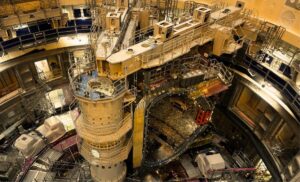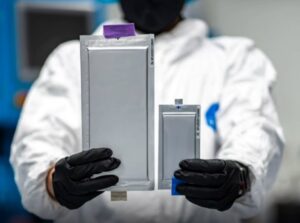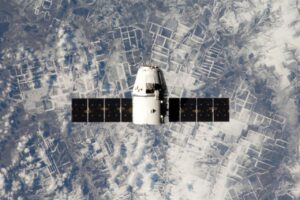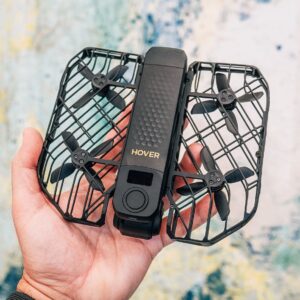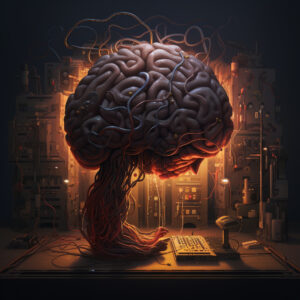Artificial Intelligence (AI) has become a cornerstone of modern technology, and its integration with robotics is transforming industries and daily life. This article explores the profound impact of AI in robotics, highlighting its applications, benefits, and future potential.
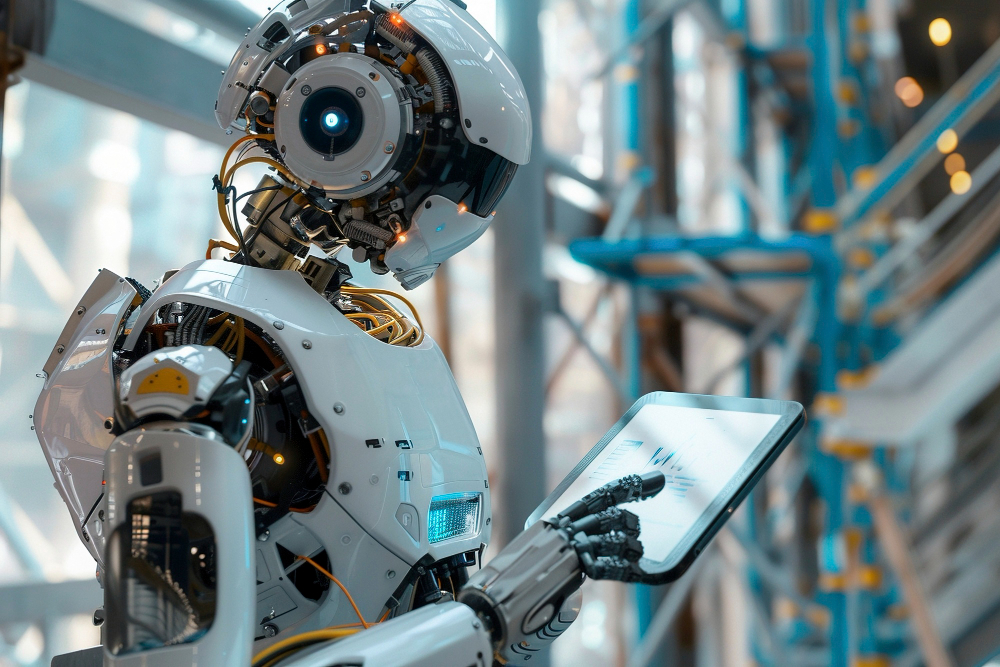 Pin
Pin Image by Freepik
Table of Contents
What is AI in Robotics?
AI in robotics involves embedding intelligent algorithms into robotic systems, enabling them to perform tasks autonomously, learn from experiences, and adapt to new situations. This fusion of AI and robotics is creating smarter, more efficient machines capable of complex decision-making.
The AI-Powered Robotics Revolution in Manufacturing
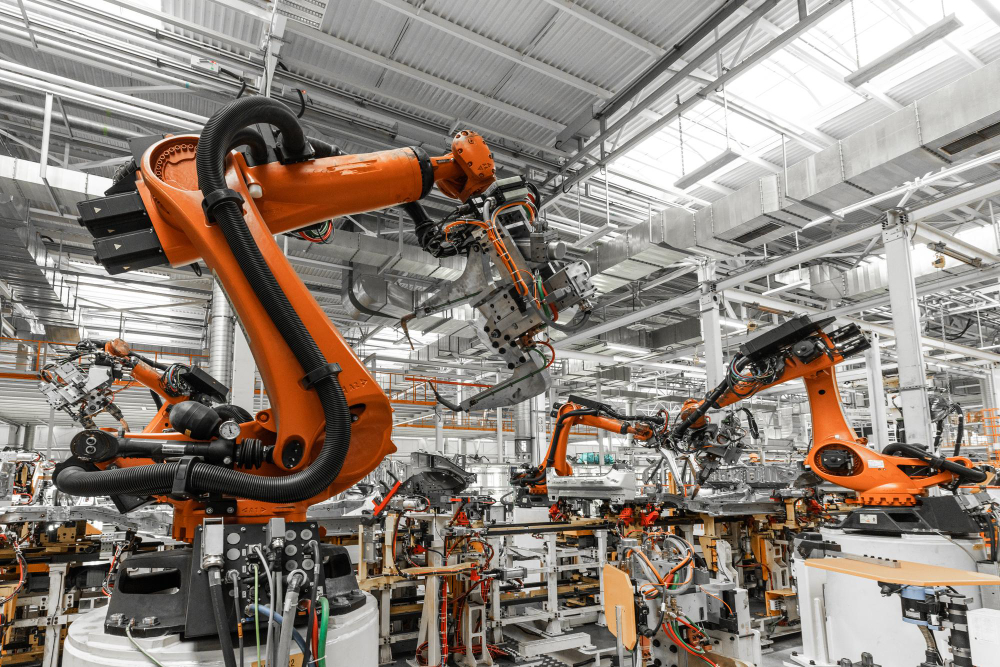 Pin
Pin Image by Tim Ulama from Pixabay
A factory floor where robots work tirelessly, performing tasks with pinpoint accuracy and incredible speed. This isn’t a scene from a sci-fi movie; it’s the reality of modern manufacturing, thanks to AI-powered robots. Let’s dive into how these intelligent machines are revolutionizing the industry.
The Art of Perfection
In manufacturing, precision is paramount. Even the slightest error can lead to significant losses. AI-powered robots excel in this area, performing tasks with a level of accuracy that humans simply can’t match. Whether it’s assembling tiny electronic components or welding car parts, these robots ensure every action is executed flawlessly.
For instance, in the automotive industry, AI-driven robots are used to apply paint with such precision that it minimizes waste and ensures a perfect finish every time. This not only enhances the quality of the product but also reduces costs associated with material wastage.
The Need for Speed
Speed is another critical factor in manufacturing. The faster products can be made, the more competitive a company becomes. AI-powered robots can operate at speeds that far exceed human capabilities. They don’t need breaks, don’t get tired, and can work around the clock.
Take the example of a bottling plant. AI robots can fill, cap, and label thousands of bottles per hour, a task that would take a human workforce much longer to complete. This rapid production capability helps companies meet high demand and deliver products to market faster.
Doing More with Less
Efficiency in manufacturing means producing more with fewer resources. AI-powered robots are masters of efficiency. They can perform repetitive tasks with consistent quality, reducing the likelihood of errors and the need for rework.
Consider the electronics industry, where precision and efficiency are crucial. AI robots can assemble intricate circuit boards with incredible speed and accuracy, ensuring each component is placed perfectly. This not only speeds up production but also reduces the risk of defects, leading to higher overall productivity.
Reducing Human Error
Human error is an inevitable part of manual labor. Fatigue, distraction, and other factors can lead to mistakes. AI-powered robots, however, are immune to these issues. They perform tasks with unwavering consistency, ensuring high-quality output every time.
In pharmaceutical manufacturing, for example, AI robots are used to handle delicate processes like mixing chemicals and filling vials. Their precision and reliability minimize the risk of contamination and ensure that every batch meets strict quality standards.
Increasing Productivity
Ultimately, the integration of AI-powered robots in manufacturing leads to a significant boost in productivity. By taking over repetitive and mundane tasks, these robots free up human workers to focus on more complex and creative aspects of production. This synergy between human ingenuity and robotic efficiency drives innovation and growth in the industry.
AI-powered robots are not just enhancing precision, speed, and efficiency in manufacturing; they are transforming the entire landscape. As technology continues to advance, we can expect these intelligent machines to play an even more significant role in shaping the future of manufacturing.
The Role of AI-Driven Robots in Healthcare
 Pin
Pin Image by from Freepik
A robots assist doctors in performing surgeries, provide personalized patient care, and even help diagnose diseases with remarkable accuracy. This isn’t a futuristic dream—it’s the reality of AI-driven robots in healthcare today.
Surgical Precision: The New Standard
In the operating room, precision is crucial. Even the slightest error can have significant consequences. AI-driven robots are setting new standards in surgical precision, particularly in minimally invasive procedures. These robots can perform complex tasks with a level of accuracy that surpasses human capabilities.
For instance, the da Vinci Surgical System is a prime example of AI in action. Surgeons control the robot’s arms, which can make tiny, precise movements. This technology allows for smaller incisions, reducing the risk of infection and speeding up recovery times. Patients benefit from less pain and shorter hospital stays, making the entire surgical experience more efficient and effective.
Patient Care: Personalized and Efficient
AI-driven robots are also making waves in patient care. These robots can assist nurses and caregivers by performing routine tasks, allowing healthcare professionals to focus on more critical aspects of patient care. For example, robots can help with lifting and moving patients, reducing the physical strain on human caregivers.
AI robots can monitor patients’ vital signs and provide real-time data to healthcare providers. This continuous monitoring ensures that any changes in a patient’s condition are detected early, allowing for timely interventions. In elderly care, robots like the Paro therapeutic robot provide companionship and emotional support, improving the quality of life for patients.
Diagnostics: Early and Accurate Detection
Accurate and early diagnosis is key to effective treatment. AI-driven robots are revolutionizing diagnostics by analyzing vast amounts of medical data quickly and accurately. These robots use machine learning algorithms to identify patterns and anomalies that might be missed by human eyes.
For example, AI-powered imaging systems can analyze medical scans to detect early signs of diseases like cancer. These systems can highlight suspicious areas on X-rays or MRIs, helping radiologists make more accurate diagnoses. In some cases, AI algorithms have been shown to match or even surpass the diagnostic accuracy of human doctors.
Minimally Invasive Procedures: Less Pain, Faster Recovery
Minimally invasive procedures are becoming increasingly popular due to their numerous benefits, including reduced pain, lower risk of complications, and faster recovery times. AI-driven robots play a crucial role in these procedures by providing the precision and control needed for delicate operations.
For instance, in orthopedic surgery, robots can assist in joint replacements by accurately positioning implants. This precision ensures better alignment and function of the joint, leading to improved outcomes for patients. Similarly, in cardiology, robots can navigate through blood vessels to perform procedures like stent placements with minimal invasion.
The future of AI-driven robots in healthcare is incredibly promising. As technology continues to advance, we can expect these robots to become even more sophisticated and capable. They will likely take on more complex tasks, further improving patient outcomes and transforming the healthcare landscape.
AI-driven robots are revolutionizing healthcare by enhancing surgical precision, improving patient care, and providing accurate diagnostics. Their ability to support minimally invasive procedures ensures better outcomes and faster recovery times for patients. As we look to the future, the potential for AI in healthcare is limitless, promising a new era of medical innovation and excellence.
How AI-Powered Robots are Transforming Agriculture
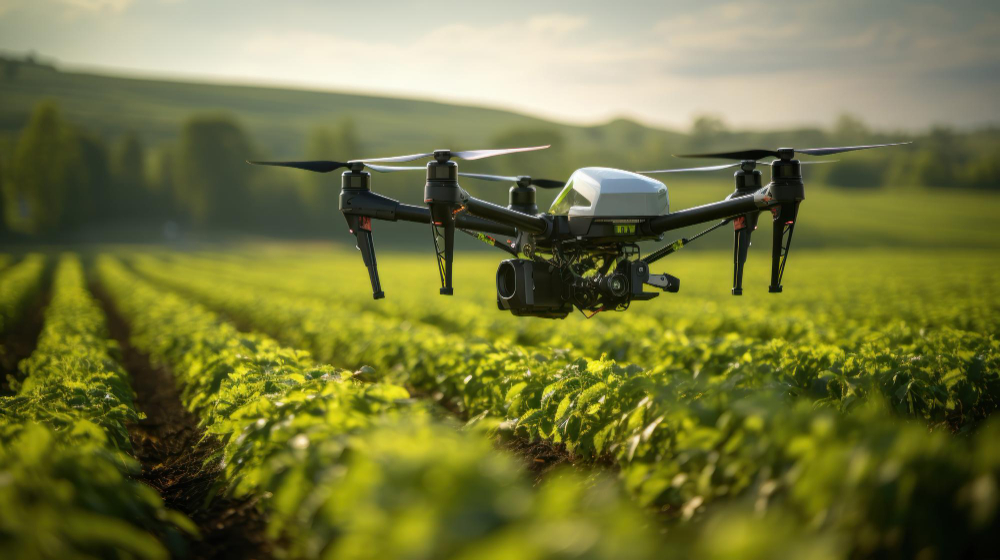 Pin
Pin Image by rorozoa on Freepik
Walking through a farm where robots are diligently monitoring crops, harvesting produce, and analyzing soil health. This isn’t a scene from a futuristic movie—it’s the reality of modern agriculture, thanks to AI-powered robots. Let’s explore how these intelligent machines are revolutionizing farming practices.
Crop Monitoring
One of the most critical aspects of farming is keeping a close eye on crop health. AI-powered robots equipped with advanced sensors and computer vision technology can monitor crops with incredible precision. These robots can detect signs of disease, pest infestations, and nutrient deficiencies early on, allowing farmers to take timely action.
For example, drones equipped with AI can fly over vast fields, capturing high-resolution images of crops. These images are then analyzed using machine learning algorithms to identify any issues. This real-time monitoring helps farmers maintain healthy crops and optimize their use of resources like water and fertilizers.
Harvesting: Precision and Efficiency
Harvesting is a labor-intensive process that requires precision and timing. AI-driven robots are transforming this aspect of agriculture by automating the harvesting process. These robots can identify ripe produce and pick it with care, ensuring minimal damage and maximum efficiency.
Consider strawberry harvesting, which is traditionally done by hand. AI-powered robots can navigate through rows of plants, using computer vision to identify ripe strawberries. With their delicate touch, they can pick the fruit without bruising it, ensuring high-quality produce. This automation not only saves time but also addresses labor shortages in the agricultural sector.
Soil Analysis
Healthy soil is the foundation of successful farming. AI-powered robots play a crucial role in soil analysis, helping farmers understand the nutrient content, moisture levels, and overall health of their soil. This information is vital for making informed decisions about crop management.
For instance, robots equipped with soil sensors can collect samples and analyze them on the spot. They can measure parameters like pH levels, organic matter content, and soil compaction. By providing detailed insights into soil health, these robots enable farmers to implement targeted interventions, such as adjusting irrigation schedules or applying specific fertilizers.
Optimizing Farming Practices: The Smart Farm
The integration of AI in agricultural robots is leading to the concept of the “smart farm.” These farms leverage data and automation to optimize every aspect of farming, from planting to harvesting. AI algorithms analyze data collected by robots to provide actionable insights, helping farmers make better decisions.
For example, AI can predict the best times to plant and harvest crops based on weather patterns and soil conditions. It can also recommend the optimal amount of water and nutrients needed for each crop, reducing waste and promoting sustainable farming practices. This data-driven approach leads to higher yields and more efficient use of resources.
Sustainable Farming: A Greener Future
Sustainability is a growing concern in agriculture, and AI-powered robots are playing a key role in promoting eco-friendly practices. By optimizing resource use and reducing waste, these robots help farmers minimize their environmental footprint.
For instance, precision irrigation systems use AI to deliver the right amount of water to each plant, reducing water consumption. Similarly, AI-driven pest management systems can target specific areas with minimal pesticide use, protecting beneficial insects and reducing chemical runoff.
AI-powered robots are revolutionizing agriculture by enhancing crop monitoring, automating harvesting, and providing detailed soil analysis. These intelligent machines are optimizing farming practices, leading to higher yields and more sustainable farming. As technology continues to advance, the potential for AI in agriculture is limitless, promising a future where farming is smarter, more efficient, and environmentally friendly.
Logistics and Supply Chain
 Pin
Pin Image by Freepik
In bustling warehouse robots zip around, efficiently managing inventory, picking and packing orders, and ensuring timely deliveries. This isn’t a scene from a futuristic movie—it’s the present reality of logistics and supply chain management, thanks to AI-enabled robots.
Warehouse Operations
Warehouses are the backbone of the supply chain, acting as the central hub where goods are stored, sorted, and shipped. AI-enabled robots are revolutionizing warehouse operations by automating repetitive tasks and optimizing workflows.
For instance, autonomous mobile robots (AMRs) navigate warehouse floors, transporting goods from one location to another. These robots use AI algorithms to plan the most efficient routes, avoiding obstacles and reducing travel time. This automation not only speeds up operations but also minimizes the risk of human error.
Inventory Management
Managing inventory is a complex task that requires precision and accuracy. AI-enabled robots excel in this area by continuously monitoring stock levels and updating inventory records in real-time. They use advanced sensors and computer vision to scan barcodes and RFID tags, ensuring that every item is accounted for.
Consider a scenario where a robot scans thousands of items per hour, instantly updating the inventory database. This real-time data allows businesses to maintain optimal stock levels, reducing the chances of overstocking or stockouts. AI algorithms can predict demand patterns, helping companies plan their inventory more effectively.
Picking and Packing
The process of picking and packing orders is labor-intensive and time-consuming. AI-enabled robots streamline this process by automating the selection and packaging of items. These robots can identify products, pick them from shelves, and pack them into boxes with remarkable speed and accuracy.
For example, in an e-commerce warehouse, robots equipped with AI can quickly locate and pick items from shelves, reducing the time it takes to fulfill orders. This efficiency is crucial in meeting the high demands of online shopping, especially during peak seasons like holidays.
Delivery Processes
The final step in the logistics chain is delivering products to customers. AI-enabled robots play a significant role in ensuring timely and reliable deliveries. Autonomous delivery robots and drones are being used to transport packages directly to customers’ doorsteps.
These robots use AI to navigate through traffic, avoid obstacles, and find the most efficient delivery routes. This not only speeds up the delivery process but also reduces operational costs associated with traditional delivery methods. Additionally, real-time tracking systems provide customers with accurate delivery updates, enhancing their overall experience.
Service Delivery: The Role of AI-Powered Robots
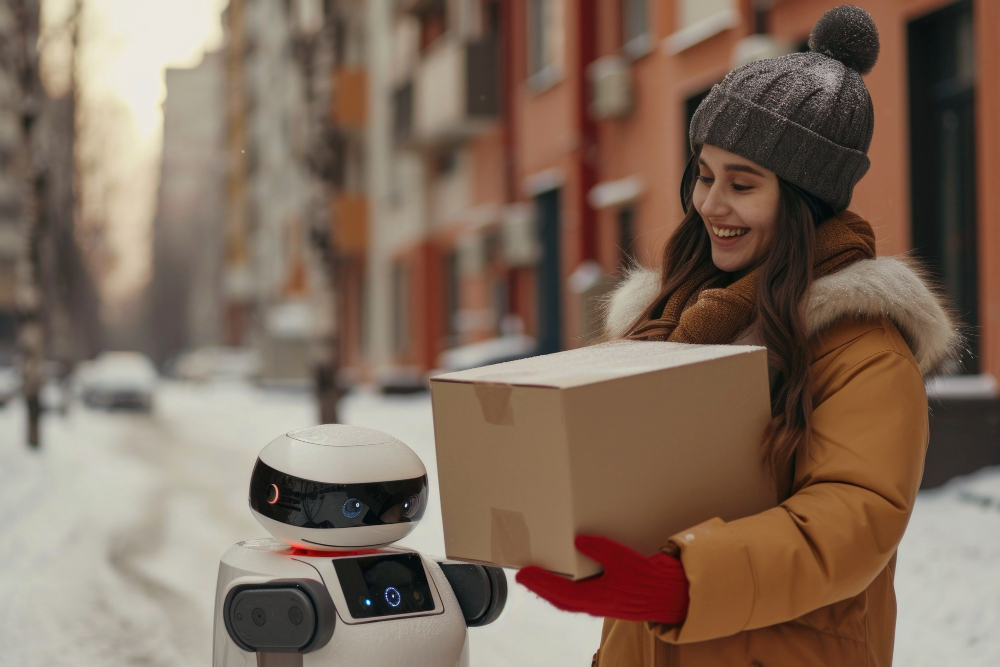 Pin
Pin Image by Freepik
Walking into a hotel, a friendly robot greets you at the reception, answers your questions, and even guides you to your room. Or picture a shopping mall where robots clean the floors, ensuring a spotless environment. This is the new reality of the service industry, thanks to AI-powered robots. Let’s explore how these intelligent machines are enhancing service delivery and improving overall service quality.
Customer Service Bots: The New Face of Hospitality
Customer service is all about providing a seamless and pleasant experience. AI-powered customer service bots are revolutionizing this aspect by offering instant, accurate, and personalized assistance. These bots can interact with customers, answer queries, and provide information, all while maintaining a friendly demeanor.
For instance, in the hospitality industry, robots like “Connie” at Hilton Hotels use AI to assist guests with information about hotel amenities, local attractions, and dining options. These robots can understand and respond to natural language, making interactions feel more human-like. By handling routine inquiries, they free up human staff to focus on more complex tasks, enhancing overall service efficiency.
Cleaning Robots
Maintaining cleanliness in public spaces is crucial for customer satisfaction. AI-powered cleaning robots are taking over this responsibility, ensuring that environments like hotels, airports, and shopping malls remain spotless. These robots use advanced sensors and AI algorithms to navigate spaces, avoid obstacles, and clean efficiently.
For example, robots like “Whiz” by SoftBank Robotics can vacuum large areas autonomously, learning the layout of the space and optimizing their cleaning routes. They can work continuously without breaks, ensuring a consistently clean environment. This not only improves the customer experience but also reduces the workload on human cleaning staff.
Interactive Robots: Enhancing Customer Engagement
Interactive robots are becoming a common sight in various service settings, from retail stores to museums. These robots can engage with customers, provide information, and even entertain. Their presence adds a unique and modern touch to the customer experience.
In retail, robots like “Pepper” can greet customers, answer questions about products, and even assist with purchases. They can recognize and respond to human emotions, making interactions more engaging and personalized. In museums, robots can guide visitors through exhibits, providing detailed information and answering questions, making the visit more informative and enjoyable.
Routine Task Automation: Efficiency and Consistency
AI-powered robots excel at performing routine tasks with high efficiency and consistency. In the service industry, this means automating tasks like inventory management, order processing, and even food preparation. By taking over these repetitive tasks, robots ensure that services are delivered quickly and accurately.
For instance, in restaurants, robots like “Flippy” by Miso Robotics can cook burgers, fry chicken, and prepare other dishes with precision. This automation ensures consistent quality and frees up human chefs to focus on more creative aspects of cooking. In retail, robots can manage inventory by scanning shelves, tracking stock levels, and alerting staff when items need restocking.
The integration of AI-powered robots in the service industry leads to significant improvements in service quality. These robots enhance efficiency, reduce wait times, and ensure consistent service delivery. By handling routine tasks, they allow human staff to focus on providing personalized and high-quality customer interactions.
AI robots can gather and analyze data on customer preferences and behaviors, providing valuable insights for businesses. This data-driven approach enables companies to tailor their services to meet customer needs better, ultimately leading to higher customer satisfaction and loyalty.
AI-powered robots are transforming the service industry by enhancing customer service, ensuring cleanliness, engaging customers, and automating routine tasks. Their ability to improve efficiency and service quality is revolutionizing the way businesses operate, paving the way for a smarter and more customer-centric future.
Benefits of AI in Robotics
- Enhanced Capabilities: AI algorithms enable robots to perform tasks that were previously impossible, such as recognizing objects, understanding natural language, and making real-time decisions.
- Increased Efficiency and Productivity: AI-driven automation reduces the need for human intervention, leading to faster and more efficient operations.
- Improved Safety: Robots can handle hazardous tasks, reducing the risk to human workers and ensuring a safer working environment.
FAQs
AI enhances the capabilities of robots by enabling them to perform complex tasks with greater efficiency and precision. It allows robots to learn from data, make intelligent decisions, and adapt to new situations.
AI improves robot functionality through technologies like deep learning, natural language processing, and computer vision. These technologies help robots understand and interact with their environment, recognize objects, and even understand human language.
AI-driven robots are used in various fields such as industrial automation, healthcare, search and rescue missions, and personal assistance. For example, in healthcare, robots assist in surgeries and patient care, while in manufacturing, they enhance production efficiency.
Integrating AI with robotics leads to increased productivity, improved accuracy, and the ability to perform tasks that are dangerous or difficult for humans. It also opens up new possibilities for innovation and development in various industries.
Some challenges include technical barriers such as data collection and processing, hardware limitations, and ensuring safety and reliability. Ethical concerns, such as job displacement and privacy issues, also need to be addressed.
AI is expected to revolutionize robotics by making robots more autonomous, intelligent, and capable of performing a wider range of tasks. This will likely lead to significant advancements in fields like healthcare, manufacturing, and everyday life.
AI in robotics can lead to cost savings, increased efficiency, and new job opportunities in tech development and maintenance. However, it may also result in job displacement in certain sectors, necessitating workforce retraining and adaptation.
Ensuring ethical use involves creating regulations and guidelines that address privacy, safety, and job displacement concerns. It also requires ongoing dialogue between stakeholders, including governments, companies, and the public.











